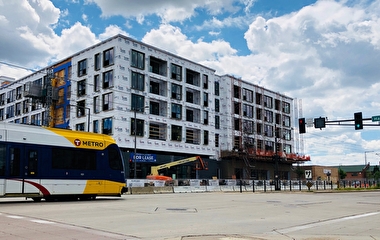The term “smart city” is invading our world, but what exactly does it mean? What makes a city smart? According to Jaume Barceló of the Technical University of Catalonia in Barcelona, “smartness” is not simply synonymous with technology. Rather, it depends on how a city uses its data and technology to influence and improve services and quality of life.
“A smart city is one that uses the huge amounts of quality data that are now available through the instrumentation of our urban areas to provide information and insights on how to better manage their city,” said Barceló during his presentation at the CTS Winter Luncheon on February 9.
According to Barceló, the availability and quantity of urban data have increased dramatically during the past 20 years, and the technology used to collect this data is now more interconnected than ever before. However, data alone does not make a city smart. “Data on its own does not provide information,” Barceló emphasized. “Data collection is just the starting point—if I want to generate information I must process this data with models, and if we have better data we can build better models and generate better information, which will in turn help us to provide better services.”
Through advanced data processing techniques, data can be filtered and filled in to make it more accurate and complete, then fused with other types of data to provide better information. “For example, traffic data and weather data are both very different types of data, but weather can have a big impact on traffic,” Barceló said. “We can combine these two types of data through data fusion and then use data modeling to support decision making.”
Barceló also stressed the need to make the information generated with data models available to both decision makers and the public through easy-to-use graphical interfaces. “One aspect of smart mobility is making real-time journey planning available through mobile devices. Using a simple interface, you could plan a route that allows you to drive by a car to a certain point, park, and take public transportation, and then walk to your destination. If I have the ability to plan a viable transportation option right when I need it, maybe I don’t even need my car.”
User-friendly technology such as a real-time journey-planning tool could also promote sustainability. For example, it could provide information on the environmental impacts of different mode choices for a journey, giving users the ability to choose more environmentally friendly travel modes.
Importantly, the emergence of smart cities and smart mobility has the potential to change not just how we move through and manage our cities today, but also how we plan for the future of our urban areas. “Through the use of data and models, we can better understand the relationship between land use, transportation, and mobility patterns,” Barceló says. “This allows us to determine which things are generating positive impacts and which are generating negative impacts, and make decisions that strengthen the positive links between land use and transport.”



